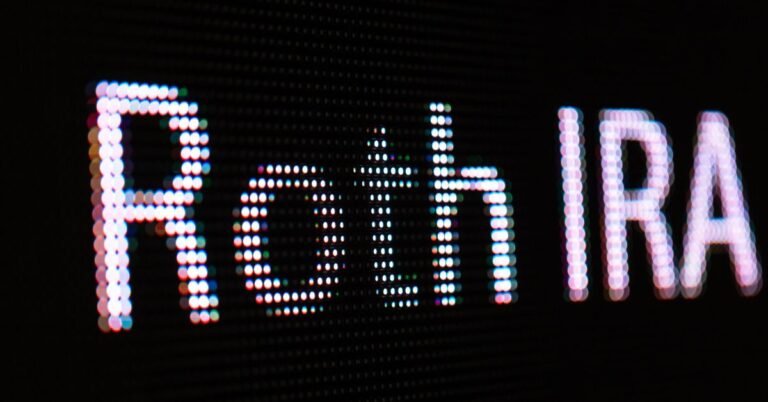Saving for retirement can seem daunting. Fortunately, various retirement savings plans exist to help you grow your nest egg. Each has unique advantages and disadvantages to consider. Comparing retirement savings plans the key features, benefits, and limitations of each can help you choose the right savings plan for your situation. This article compare the most common retirement savings plans and analyzes their pros and cons.
401(k) Plans
401(k)s are employer-sponsored plans that allow pre-tax contributions from your paycheck up to annual limits ($20,500 plus a $6,500 catch-up for 50+ in 2022). Many employers also match contributions up to a percentage of salary. Funds can be invested across available options.
Pros:
- Tax-deferred growth potential
- Possible employer match
- Automatic payroll contributions
- Ability to borrow from yourself
Cons:
- Limited investment options
- Pay penalties if withdrawn early
- Changes in jobs may limit contributions
Overall, 401(k)s are a powerful savings tool thanks to tax savings, compound growth, and employer matches. Limitations on investment options and lack of portability between jobs are disadvantages to weigh.

403(b) Plans
403(b)s are similar to 401(k)s but for non-profit and public education employees. As with 401(k)s:
Pros:
- Pre-tax contributions lower taxable income
- Potential for employer matching
- Automatic payroll deductions
Cons:
- Less flexible than IRAs
- Changing employers can freeze contributions
- Fewer investment options than IRAs
For qualifying employees, 403(b)s provide excellent retirement savings like 401(k)s. Limitations are also similar, but they remain an essential workplace retirement plan.
457 Plans
457 plans are employer-sponsored for state and municipal government employees.
Pros:
- Tax-deferred growth
- Some additional contribution allowances
Cons:
- Typically no employer match
- Limited investment options
- Not portable between jobs
For the right workers, 457s offer strong advantages. But the lack of portability and employer contributions make them less advantageous than 401(k) or 403(b)s overall.
Traditional and Roth IRAs

IRAs allow individuals to save up to annual limits regardless of workplace plans. Traditional IRAs offer tax deductions for contributions while Roth IRAs provide tax-free growth.
Traditional IRA pros:
- Upfront tax deduction
- Numerous investment choices
- Can contribute past age 70 1/2
- Flexible withdrawals
Roth IRA pros:
- Tax-free growth and withdrawals
- Numerous investment choices
- Can contribute past age 70 1/2
- Flexible withdrawals
Cons For Both:
- Lower annual contribution limits
- No employer match
For supplemental savings, IRAs provide flexibility and tax perks not found in employer plans. The choice between Traditional versus Roth depends on current vs. future tax rates.
Solo 401(k)s
Also called Individual 401(k)s or Self-Employed 401(k)s, these allow self-employed persons to contribute as both employer and employee.
Pros:
- Significantly higher contribution limits
- Pre-tax savings potential
- Plan loans allowed
- Portable across self-employment
Cons:
- Annual IRS filings and administration
- Higher startup and maintenance fees
- Limited custodian choices
For gig workers and small business owners, Solo 401(k)s provide advantages similar to standard 401(k)s but with greater contribution flexibility. The administrative burden is the main drawback.

SEP-IRAs
SEP-IRAs function like employer-sponsored IRAs for self-employed individuals.
Pros:
- Higher annual contribution limits than IRAs
- Tax-deferred savings
- Easy to set up and maintain
Cons:
- Employer contributions are mandatory and not flexible year-to-year
- No employee salary deferral option
- Difficult to borrow against
SEPs provide a simple, low-burden retirement savings option for self-employed. Lack of flexibility on annual contributions can be a limitation, however.
Conclusion:
Choosing the right retirement savings plans requires understanding your employment situation, savings goals, tax considerations, and planning needs. Weighing the pros and cons of each can lead you to the ideal plans to maximize your nest egg.
FAQs About Comparing Retirement Savings Plans
Can I have both a 401(k) and an IRA?
Yes, you can contribute to a 401(k) or similar employer plan and also have an IRA. Your ability to deduct IRA contributions depends on your income if you have a workplace plan. Both allow combined tax-advantaged savings.
What happens to my 401(k) if I change jobs?
You have a few options if leaving an employer before retirement: 1) Leave the account in the old plan if allowed, 2) Rollover the balance into your new employer’s 401(k), or 3) Rollover the funds into an IRA account to maintain tax-deferred status.
What is the saver’s tax credit for IRA contributions?
If your income falls below certain levels, you may qualify for a tax credit of up to $1,000 per person for IRA contributions. This can provide up to 50% back in tax savings on the first $2,000 you contribute to an IRA.
Can I have multiple IRA accounts?
Yes, you can open multiple IRAs with different institutions, but your total annual contributions across IRAs cannot exceed annual IRA limits. Multiple accounts allow you to shop for the best investment options and rates.
Are retirement account contributions tax deductible?
Contributions to Traditional 401(k)s, 403(b)s, 457s, and Traditional IRAs are made pre-tax and reduce your current year taxable income. Roth options don’t offer an upfront deduction but provide tax-free withdrawals.




